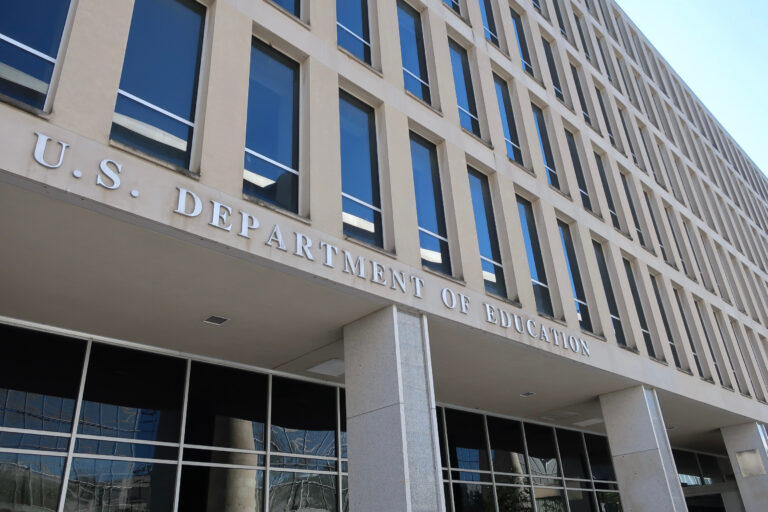The Congressional Budget Office (CBO) released an analysis earlier this week, revealing that the Pell grant program would not be in a budgetary shortfall for the 2026 fiscal year. In other circumstances, a federal entitlement program not operating in shortfall would be something to cheer.
“The Pell Grant program functions as an entitlement, meaning every student who qualifies for a grant receives a grant, regardless of available federal funding. However, funding the program relies on discretionary appropriations by Congress. The appropriations cycle and the academic calendar are not aligned, making it incredibly difficult to know actual program costs that drive funding allocations,” said W/A Senior Vice President Alison Griffin. “Year over year, Congress is making an educated guess, at best. And in some years, that guess results in a program shortfall – in others, a surplus.”
Unfortunately, this budgetary update is not because of an unusually strong Congressional appraisal, but is instead attributable to the complications with last year’s Better FAFSA—CBO estimates that at a minimum, 1.1 million fewer Pell-eligible students will receive a Pell grant.
For many students with financial need (often students of color and first-generation students), the failure to not just provide timely financial aid packages, but financial aid entirely, results in the decision to not enroll in college at all.
Postsecondary dreams, dashed en masse? It’s possible.
The botched rollout of the Better FAFSA has been discussed ad nauseam over the last several months. Now, organizations, experts, and officials are looking toward the fall. Some are considering the possibility of an “enrollment cliff,” in which the failures surrounding the FAFSA accelerate pre-existing enrollment declines. [Inside Higher Ed]
Enrollment has been steadily dropping over the past decade, largely driven by the pandemic, concerns about value, and chronically high costs. Gen Z is increasingly rejecting the traditional four-year degree pathway in favor of jobs in the skilled trades, so much so that the generation is being coined the “Toolbelt Generation.” [CNBC; Inside Higher Ed; NPR]
Enrollment declines put some institutions in financial jeopardy, resulting in closures. 95% of colleges, particularly smaller institutions, rely on tuition to keep the doors open and lights on. According to an analysis of federal data by the State Higher Education Executive Officers Association (SHEEO), more than 30 schools—a mix of nonprofit and for-profit—were shuttered in 2023 alone, and now, colleges are closing at a pace of one a week. For schools already under financial strain, a FAFSA-driven enrollment cliff might be the straw that breaks the camel’s back. [CNBC; CNN; Inside Higher Ed; The Hechinger Report]
We won’t know how badly enrollment was impacted by the FAFSA until National Student Clearinghouse data is released next spring. But higher education experts and reporters are already trying to predict what the enrollment cliff will look like for students and colleges, how far the free-fall might be, and how fixing the issues with the FAFSA can help alleviate the impact going forward.
Here’s what they’re saying:
- Elizabeth Morgan, Chief External Relations Officer, NCAN: “Longer term, we must fulfill the promise of what truly is, when the technology works, a simpler and better FAFSA. It isn’t enough to regain the FAFSA completion rates of prior years. The point of simplifying the FAFSA was to enable many more students—mostly from families with low incomes—to complete the application and gain access to the Pell grants and other need-based aid that makes postsecondary study possible for them. This goal will require sustained investment in effective, targeted outreach and universally available support for those who need assistance in completing the application.”
- Liam Knox, Admissions and Enrollment Reporter, Inside Higher Ed: “Enrollment is absolutely a priority issue for my sources in higher ed. For tuition-dependent colleges barely scraping by each semester, keeping enrollment steady—if not growing—is the only way to avoid massive cuts or closure. Their strategies range from investing in athletics to pumping money into recruitment and marketing to investing in financial aid and affordability initiatives, and their success varies widely. But between the pandemic’s aftereffects, demographic shifts, and now the FAFSA fiasco, there isn’t a single small private college or regional public institution that isn’t worried about their future enrollment prospects, and some public flagships and once-stable liberal arts colleges are starting to sweat, too.”




